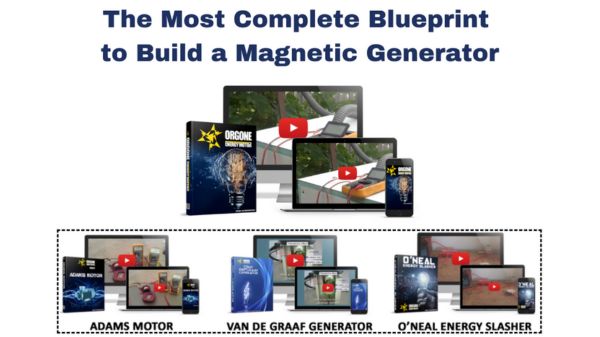10 Tips for Comparing Magnetic Field Generators
Looking to compare magnetic field generators? Well, buckle up because you’re about to embark on a magnetic adventure like no other! With so many options out there, it can be overwhelming to find the perfect generator that fits your unique needs.
But fear not, because we’ve got you covered with these 10 essential tips. From measuring magnetic field strength to evaluating power output capabilities, we’ll walk you through everything you need to know.
So get ready to become a magnetic field expert and make the best choice for your magnetic needs. Let’s dive in and start comparing those generators!
Magnetic Field Strength Measurement Techniques
Are you wondering how to accurately measure the magnetic field strength of different magnetic field generators? When it comes to assessing the performance of these generators, understanding the techniques for measuring magnetic field strength is crucial. There are several methods available, including Hall effect sensors, fluxgate magnetometers, and search coils.
Hall effect sensors are a reliable choice for measuring magnetic field strength. By detecting the Hall voltage, which is directly proportional to the magnetic field, they provide accurate measurements.
Fluxgate magnetometers, on the other hand, detect changes in the magnetic field to determine its strength. These magnetometers utilize the principle of induction and are commonly used in scientific research and industrial applications.
Another method is using search coils. By detecting the induced voltage resulting from a changing magnetic field, search coils can accurately measure magnetic field strength. These coils consist of a series of turns of wire wound into a coil shape, and they’re commonly used in research and education.
Understanding these techniques will allow you to compare and evaluate the magnetic field strength of different generators effectively.
Considerations for Generator Size and Portability
When comparing magnetic field generators, prioritize considering the size and portability of the generators to meet your specific application’s spatial and mobility requirements. The generator’s size plays a crucial role in determining its practicality and ease of deployment in various applications.
For instance, in medical therapy, a smaller and more portable generator allows for easier integration into medical devices. Additionally, the portability of the generator is essential for applications such as power converters and radar systems, where mobility is necessary.
When considering the size and portability of the generator, factors such as magnet configuration, current flowing through the generator, pulse shape, and desired field strength should be taken into account. By considering these factors, you can ensure that the generator meets your application’s requirements while maintaining the necessary size and portability.
Evaluating Magnetic Field Uniformity
To evaluate the magnetic field uniformity of different magnetic field generators, consider the waveform output and its impact on various applications. The uniformity of the magnetic field is crucial for ensuring consistent performance in applications such as medical therapy and optical switching.
When comparing magnetic field generators, keep the following factors in mind:
- Waveform Output: The shape and amplitude of the waveform directly affect the uniformity of the magnetic field. Look for generators that produce smooth and consistent waveforms.
- Coil Design: The design of the coil within the generator plays a significant role in achieving uniform magnetic fields. Opt for generators with well-designed coils to ensure better field uniformity.
- Voltage Regulation: A stable and regulated voltage supply is essential for maintaining uniformity in the magnetic field. Choose generators with reliable voltage regulation mechanisms.
Evaluating the magnetic field uniformity is particularly important for applications like plasma experiments where precise and consistent magnetic fields are required for accurate results.
Comparing Power Output Capabilities
To accurately compare the power output capabilities of magnetic field generators, you frequently need to consider specific factors and assess their performance.
When evaluating power output, it’s important to examine the high-speed capabilities of the generator. A high-speed generator can deliver pulses of current at a rapid rate, enabling it to meet the demands of applications that require quick magnetic field changes.
Additionally, examining the load resistance that the generator can handle is crucial. The load resistance determines the maximum power that the generator can deliver to the load.
Furthermore, it’s essential to analyze the peak current capabilities of the generator. A higher peak current allows for stronger magnetic fields to be generated.
Finally, assessing the current pulse characteristics of the generator is important in determining its ability to deliver consistent and precise current pulses.
Assessing Magnetic Field Frequency Range
When assessing the magnetic field frequency range of different generators, there are a few key points to consider.
First, you need to determine the optimal frequency range for your specific application. This will ensure that the generator can effectively meet your needs.
Additionally, compatibility with your application is crucial, as different generators may have limitations or requirements that may affect their performance.
Lastly, precision in frequency control is important for achieving accurate and reliable results.
Optimal Frequency Range
Assessing the magnetic field frequency range is crucial for comparing magnetic field generators. It determines the suitability of a generator for specific applications and influences its performance and energy conversion efficiency. When evaluating the optimal frequency range, consider the following:
- Electromagnetic Induction: The frequency range affects the efficiency of electromagnetic induction, which is essential for generating a magnetic field.
- Low Frequency Applications: Some applications require low-frequency magnetic fields, and the generator’s frequency range should accommodate these needs.
- High Magnetic Field Strength: For applications that demand a high magnetic field strength, a generator with a wider frequency range is necessary to achieve the desired field intensity.
Compatibility With Application
Consider the compatibility of the magnetic field generator’s frequency range with your specific application to ensure optimal performance. Assessing the frequency range is crucial, as different classes of magnetic field generators exhibit varying responses to the driving signal’s cycle.
For applications requiring a wide frequency range to drive the load, Class III magnetic field generators are suitable. On the other hand, specific applications like medical therapy and optical switching use Class I and II configurations, highlighting the importance of considering frequency range for compatibility.
It’s important to review accelerators and their associated protocols to ensure the magnetic field generator aligns with the required frequency range. This is especially important when working with magnetized high-energy-density plasma or utilizing a pulsed magnetic field generator.
Precision in Frequency Control
To ensure precise frequency control, it’s essential that you carefully evaluate the magnetic field frequency range of the generators. The magnetic field frequency range determines the range of frequencies that the generator can produce, allowing you to select the most suitable generator for your specific application.
Here are three important factors to consider when assessing the magnetic field frequency range:
- Class III MFGs: These generators are capable of producing high current levels and provide a wide frequency range for applications requiring strong magnetic fields. They’re suitable for applications such as magnetic resonance imaging (MRI) and particle accelerators.
- Class IV MFGs with control switch: These generators allow for precise frequency control by designing a load network with reactive impedances. They offer flexibility in tuning the frequency to meet specific requirements.
- Class II MFG configuration: This configuration is commonly used in medical therapy and optical switching applications, where precision in frequency control is crucial. Assessing the magnetic field frequency range is particularly important for ensuring optimal performance in these applications.
Remember to evaluate the magnetic field frequency range of the generators to achieve the desired precision in frequency control.
Analyzing Generator Efficiency and Energy Consumption
Evaluate the efficiency and energy consumption of magnetic field generators by analyzing key parameters and optimizing their performance. When analyzing generator efficiency, it’s important to consider factors such as input and output variables, voltage level, supplied power, required magnetic field strength, and frequency range.
By optimizing these parameters, you can achieve fast and stable switching, resulting in improved efficiency. Additionally, energy consumption can be reduced by minimizing losses in the generator’s components, such as the coil. Efficient coil movement is crucial in minimizing energy losses and maximizing the overall performance of the magnetic field generator.
Understanding Magnetic Field Directionality
To better understand magnetic field directionality, you should take into account the key parameters and optimize their performance, as discussed in the previous subtopic.
When comparing magnetic field generators, it’s important to consider the different magnets used and how they affect the direction of the magnetic field. Here are three key points to keep in mind:
- The type of magnet used can determine the direction of the magnetic field. Some magnets have a natural polarity that aligns with the desired direction, while others may need to be oriented in a specific way to achieve the desired field direction.
- Placing the magnet inside the coil can also affect the direction of the magnetic field. By adjusting the position and orientation of the magnet within the coil, you can control the direction of the generated magnetic field.
- Understanding magnetic field directionality is crucial for optimizing the performance of magnetic field generators. By carefully considering the key parameters and their impact on the field direction, you can ensure fast and stable switching and achieve the desired magnetic field output.
Examining Generator Durability and Lifespan
Consider the lifespan and durability of magnetic field generators when comparing their performance. Generator durability is a crucial factor to consider in order to ensure long-term reliability and cost-effectiveness. When evaluating the durability of a generator, it’s important to examine its construction materials, design features, and the quality of its components.
Figure 3 shows a comparison of different circular magnet arrangements, highlighting the potential for higher energy conversion efficiency and power output, which can have a favorable impact on the durability and lifespan of magnetic field generators.
Additionally, the integration of pulsed-coil magnet systems, such as the one used on Sandia’s Z Facility, demonstrates the capability of applying uniform, high magnetic fields for extended periods, indicating durability and long lifespan.
Future advancements in MFG technology, such as the high-voltage pulser designed for generating 30-T magnetic fields, present increased potential for longer lifespan and durability.
Considering Safety Features and Certifications
When comparing magnetic field generators, it’s crucial to prioritize safety certifications. Look for certifications like UL or CE, which guarantee compliance with industry standards.
Additionally, consider key safety features such as overcurrent protection and reliable turn-on timing to prevent hazardous situations.
Safety Certifications Importance
Ensure the safety of your magnetic field generator by prioritizing proper safety certifications and features.
When comparing magnetic field generators, it’s crucial to understand the importance of safety certifications. Here are three reasons why safety certifications should be a priority when choosing a magnetic field generator:
- Compliance with regulations: Safety certifications ensure that the equipment meets industry standards and regulations related to electromagnetic field exposure. By choosing a generator with the appropriate certifications, you can be confident that it complies with the necessary safety guidelines.
- Protection of individuals: Safety certifications are especially crucial in applications where high current levels and strong magnetic fields are involved, such as medical therapy. These certifications guarantee that the generator has undergone rigorous testing to ensure the well-being of individuals using or being exposed to the magnetic field.
- Peace of mind: By selecting a magnetic field generator with proper safety certifications, you can have peace of mind knowing that the equipment’s design and performance meet established safety standards. This reassurance allows you to focus on your work without worrying about potential safety hazards.
Prioritizing safety certifications when comparing magnetic field generators is essential to ensure the well-being of individuals, comply with regulations, and provide peace of mind during operation.
Key Safety Features
To prioritize safety when comparing magnetic field generators, look for a comprehensive range of key safety features and certifications. These features ensure the protection of personnel and equipment during operation.
When evaluating magnetic field generators, consider their output protection capabilities. Look for features that protect against excessive current flow, undervoltage, and turn-on timing issues. Additionally, consider the efficiency and distortion levels of the generators. Class III and Class IV magnetic field generators are known for their high efficiency and low distortion, making them suitable for applications requiring strong magnetic fields.
Certifications such as ISO 9001 indicate that the manufacturer has implemented a quality management system, ensuring adherence to safety standards and best practices.
Comparing Certification Requirements
To further evaluate magnetic field generators, consider the certification requirements, which encompass safety features and certifications. When comparing different magnetic field generators, it’s important to take into account their certification requirements to ensure their quality and reliability.
Here are some key points to consider in this regard:
- Safety Features: Look for generators that have built-in safety features such as overcurrent protection, short circuit protection, and thermal protection. These features will help prevent any potential damage or accidents.
- Certifications: Check if the magnetic field generators comply with relevant industry standards and certifications. Look for certifications like CE, UL, and RoHS, which ensure that the generators meet specific safety and environmental requirements.
- Contextually Relevant Certifications: Consider certifications that are specific to the intended application of the magnetic field generator. For example, if you’re using the generator in a medical setting, look for certifications like ISO 13485, which ensures compliance with quality management systems for medical devices.
Cost and Value Comparison of Different Generators
When comparing different generators, consider the cost and value of each option based on their efficiency and power output.
Magnetic field generators (MFGs) come in different types, such as Class I, Class II, and Class III. The cost and value comparison of these generators depends on their performance parameters and application requirements.
For applications needing strong magnetic fields, Class III MFGs may offer better value due to their high efficiency and low distortion. Additionally, the choice of circular magnet arrangements, such as the alternating magnet arrangement, Halbach arrangement, and separate arrangement, can impact power output and energy conversion efficiency.
Therefore, when comparing MFGs, it’s important to evaluate their cost and value based on the specific requirements and desired performance parameters. By considering these factors, you can make an informed decision and choose the most suitable generator for your needs.
Conclusion
Congratulations! You have successfully navigated the treacherous terrain of comparing magnetic field generators. By diligently considering factors such as magnetic field strength, frequency range, and power efficiency, you have unlocked the secrets to finding the perfect generator for your needs.
Remember, it’s all about the Class and configuration, and don’t forget to assess durability, safety features, and cost. Now, armed with your new-found knowledge, go forth and conquer the magnetic world with confidence!
CLICK HERE TO LEARN MORE ABOUT ORGONE ENERGY MOTOR!







